The Garbha Upanishad is a profound ancient scripture that delves into the intricacies of human embryology, offering insights that predate modern scientific discoveries. This blog will explore the key concepts presented in the Garbha Upanishad, shedding light on the remarkable understanding of pregnancy and fetal development as articulated by Maharshi Pipalada.
Table of Contents
- Introduction to Project Shivoham
- The Scheme of Human Anatomy
- Elements of the Human Body
- Reproductive Elements and Conception
- Development Process of the Human Fetus
- Scientific Validation of Fetal Development
- Gender Determination and Conception of Twins
- Psychological and Spiritual State of the Fetus
- Anatomy of the Newborn Child
- Conclusion and Call to Action
- FAQs about Garbha Upanishad
Introduction to Project Shivoham
Project Shivoham aims to illuminate ancient Indian scriptures, presenting them in an accessible format. This initiative seeks to bridge the gap between ancient wisdom and modern understanding, making profound texts like the Garbha Upanishad relevant today.
Understanding Garbha Upanishad
The Garbha Upanishad is an ancient scripture that focuses on the embryological development of the human fetus. It intricately describes the biological processes occurring within a mother’s womb during pregnancy. This text stands out for its scientific insights, predating contemporary scientific discoveries by centuries.
Defining Key Terms: Garbha and Upanishad
The term “Garbha” refers to the embryo, while “Upanishad” signifies a body of knowledge that is meant for self-realization and understanding. Together, Garbha Upanishad conveys a branch of knowledge dedicated to comprehending the essence of embryonic development and its spiritual significance.
Historical Context of Garbha Upanishad
The Garbha Upanishad is part of the Adharma Veda, a lesser-known text among the vast corpus of Vedic literature. It was composed by Maharshi Pipalada, an influential sage. This scripture gained attention in the late 19th century when Paul Dusen, a German scholar, translated it into German, making it accessible to a broader audience.

Overview of Content in Garbha Upanishad
The Garbha Upanishad encompasses several crucial aspects of human development:
- Human Anatomy: It explains the structure of the human body, detailing the five elements that compose it.
- Fetal Development: The text outlines the stages of fetal growth from conception to the ninth month of pregnancy.
- Gender Determination: It discusses how the gender of the fetus is influenced by parental contributions.
- Conception of Twins: The scripture provides insight into how twins are conceived based on the dynamics within the womb.
- Psychological State of the Fetus: It explores the mental and spiritual state of the fetus, offering a unique perspective on prenatal consciousness.
- Anatomy of the Newborn: The text closes with a detailed description of the newborn’s anatomical features.
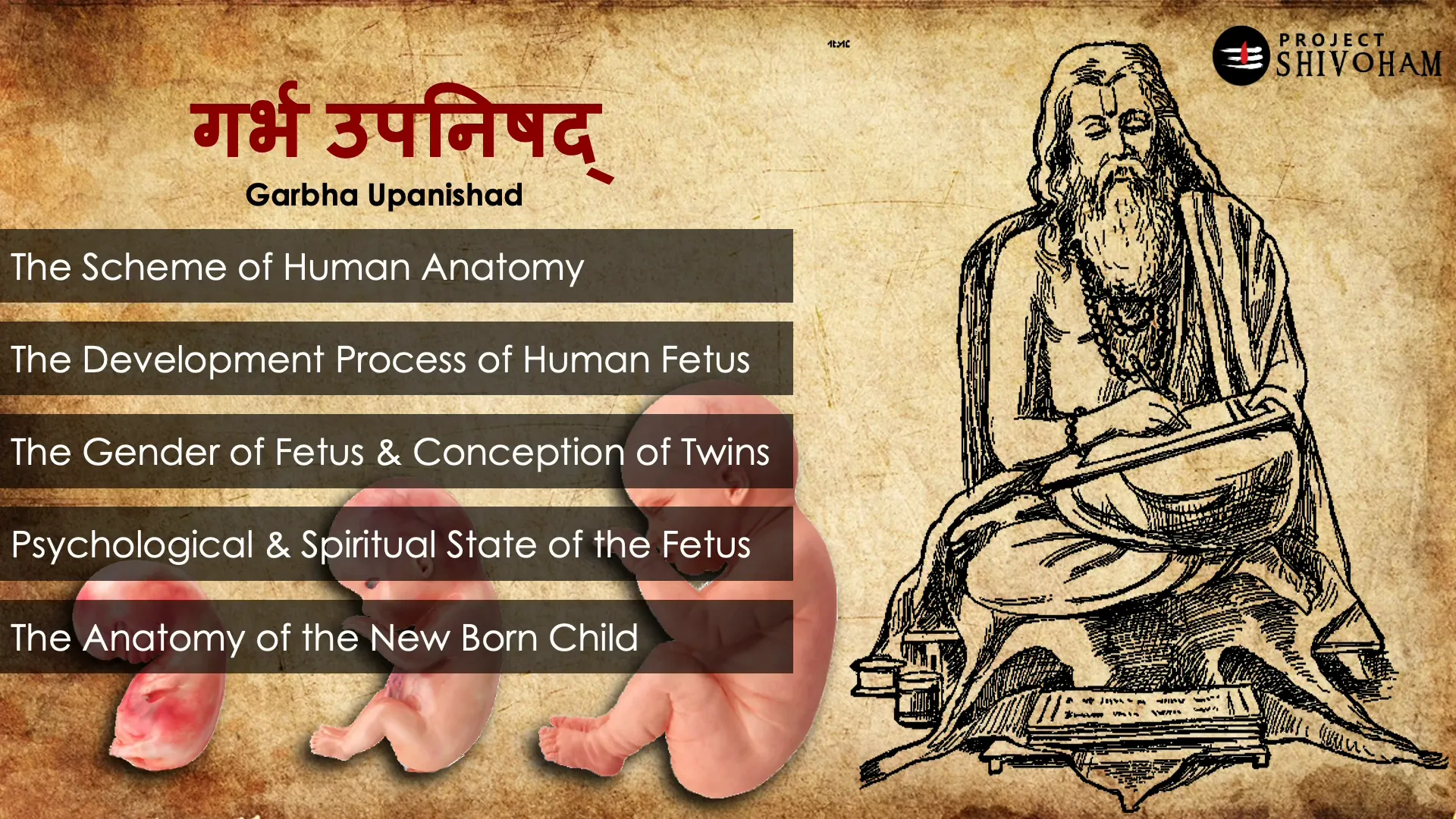
The Scheme of Human Anatomy
The Garbha Upanishad presents a detailed scheme of human anatomy, which is foundational to understanding fetal development. Maharshi Pipalada outlines that the human body comprises five primary elements, known as the Atmakar, and exists in five distinct states. This classification is not merely anatomical; it reflects a deeper philosophical understanding of the human condition.
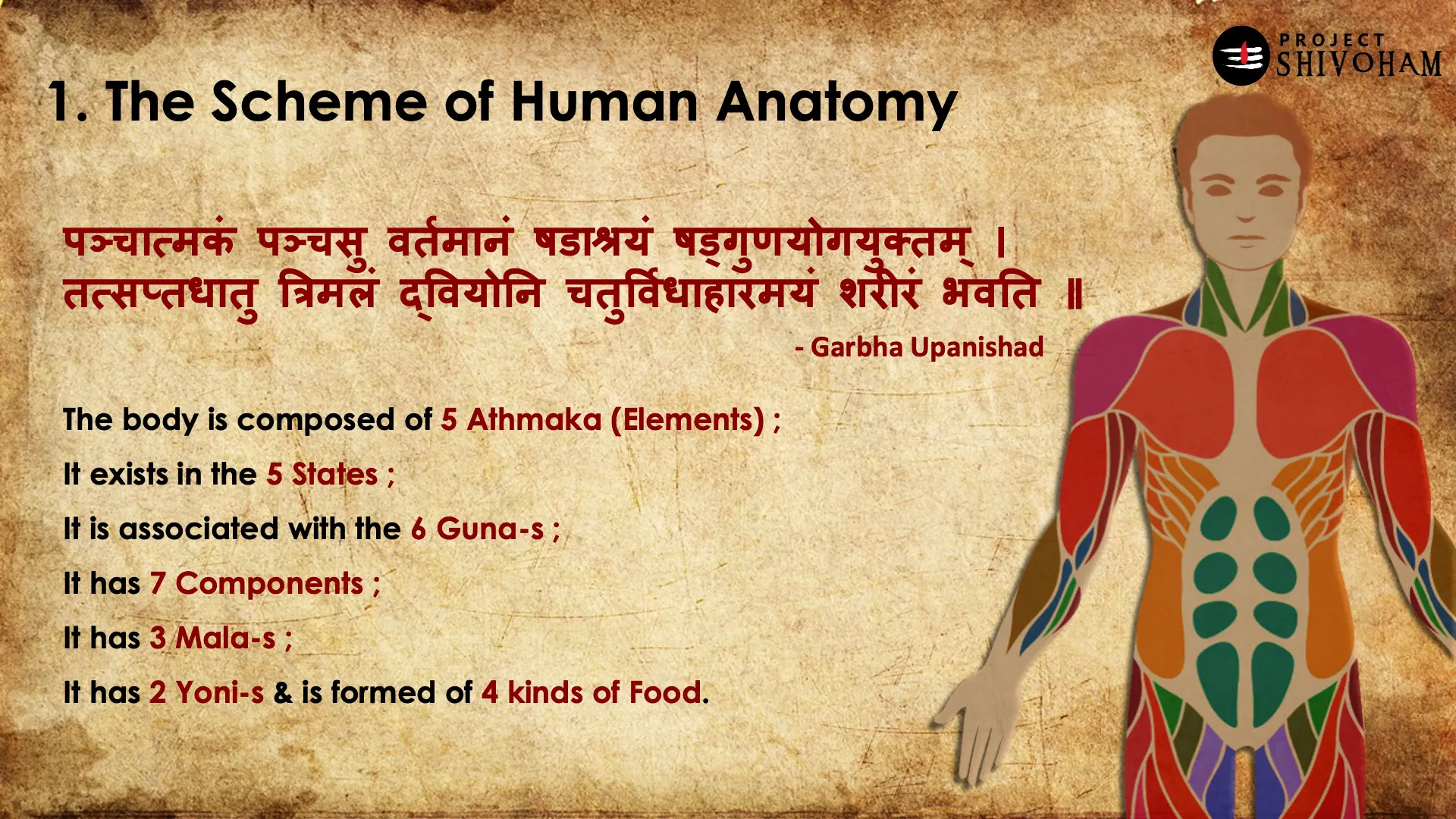
Five Elements of the Body
The five Atmakar are:
- Prithvi: the element of earth, representing solidity and structure.
- Apa: the element of water, symbolizing fluidity and adaptability.
- Tejas: the element of fire, associated with energy and transformation.
- Vayu: the element of air, indicating movement and life.
- Aakash: the element of space, representing expansiveness and potential.
These elements are not just physical components; they embody various properties that contribute to the overall physiology of the human body.
Six Gunas and Seven Components
In addition to the five elements, the human body is associated with six gunas (qualities) and seven components. The six gunas include:
- Rupa (form)
- Rasa (taste)
- Gandha (smell)
- Shabda (sound)
- Sparsha (touch)
- Vikriti (change)
The seven components, known as Sapta Dhatu, consist of Rasa (lymph), Rakta (blood), Mamsa (muscle), Medha (fat), Asti (bone), Majja (bone marrow), and Shukra (reproductive element). Each of these components plays a critical role in the sustenance of life and the reproductive process.
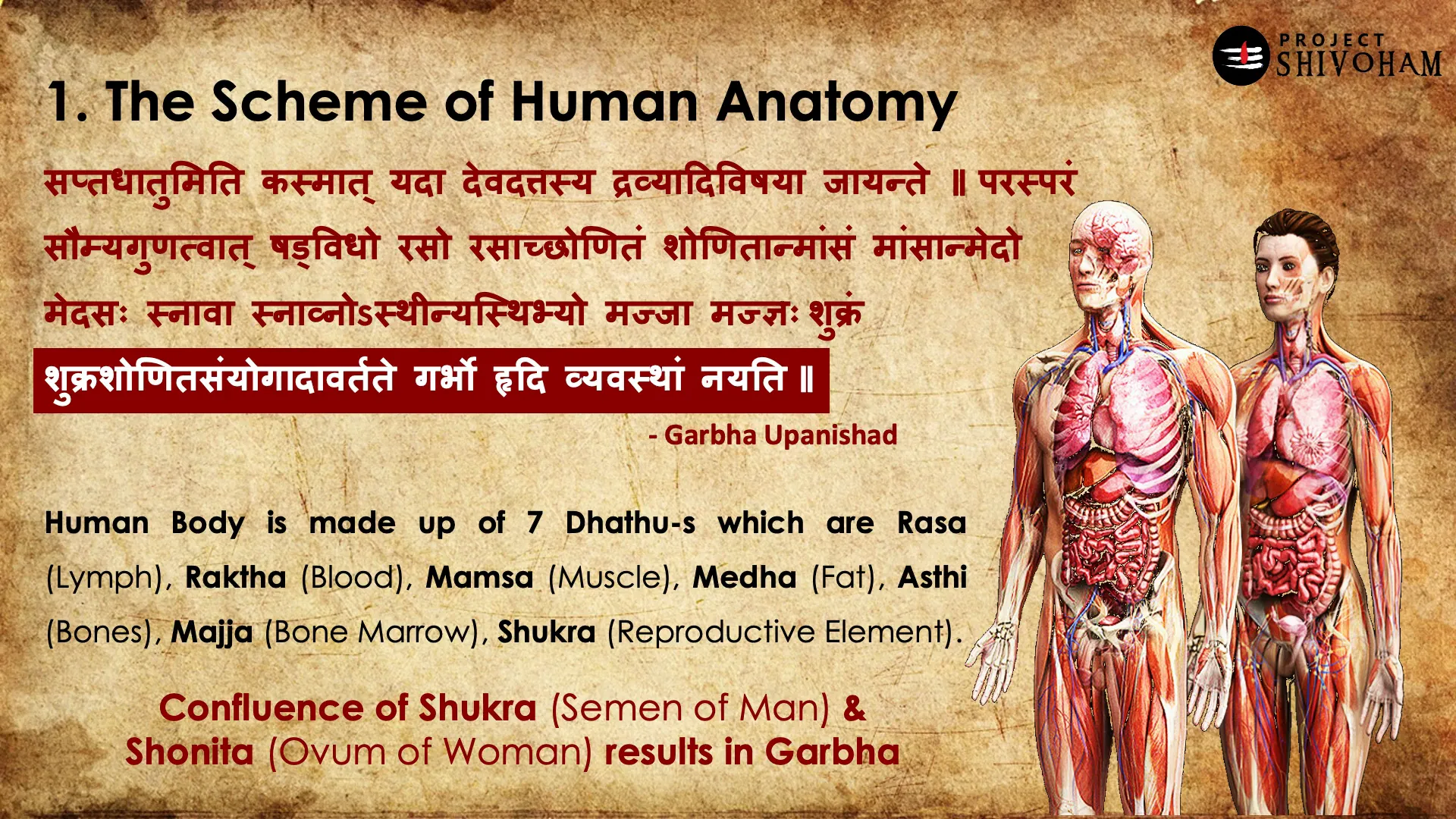
Elements of the Human Body
The Garbha Upanishad intricately discusses the elements that constitute the human body, emphasizing the importance of Shukra and Shonita in the process of conception. Shukra refers to the male sperm, while Shonita denotes the female ovum. The confluence of these two elements is essential for the initiation of life.

Reproductive Elements
The Upanishad highlights the significance of Shukra and Shonita, stating that their union brings forth Garbha, or the embryo. This understanding predates modern scientific discoveries by centuries, showcasing an advanced comprehension of human reproduction.
Shukra is described as the essence of vitality and reproductive potential, while Shonita represents the nurturing aspect of the female. Their harmonious interaction is crucial for the successful conception and development of a new life.
Reproductive Elements and Conception
The process of conception, as outlined in the Garbha Upanishad, is not only biological but also philosophical. The scripture emphasizes that the union of Shukra and Shonita is a sacred act, bringing forth the potential for life. It states that when these two elements combine, Garbha is formed, marking the beginning of a new journey.
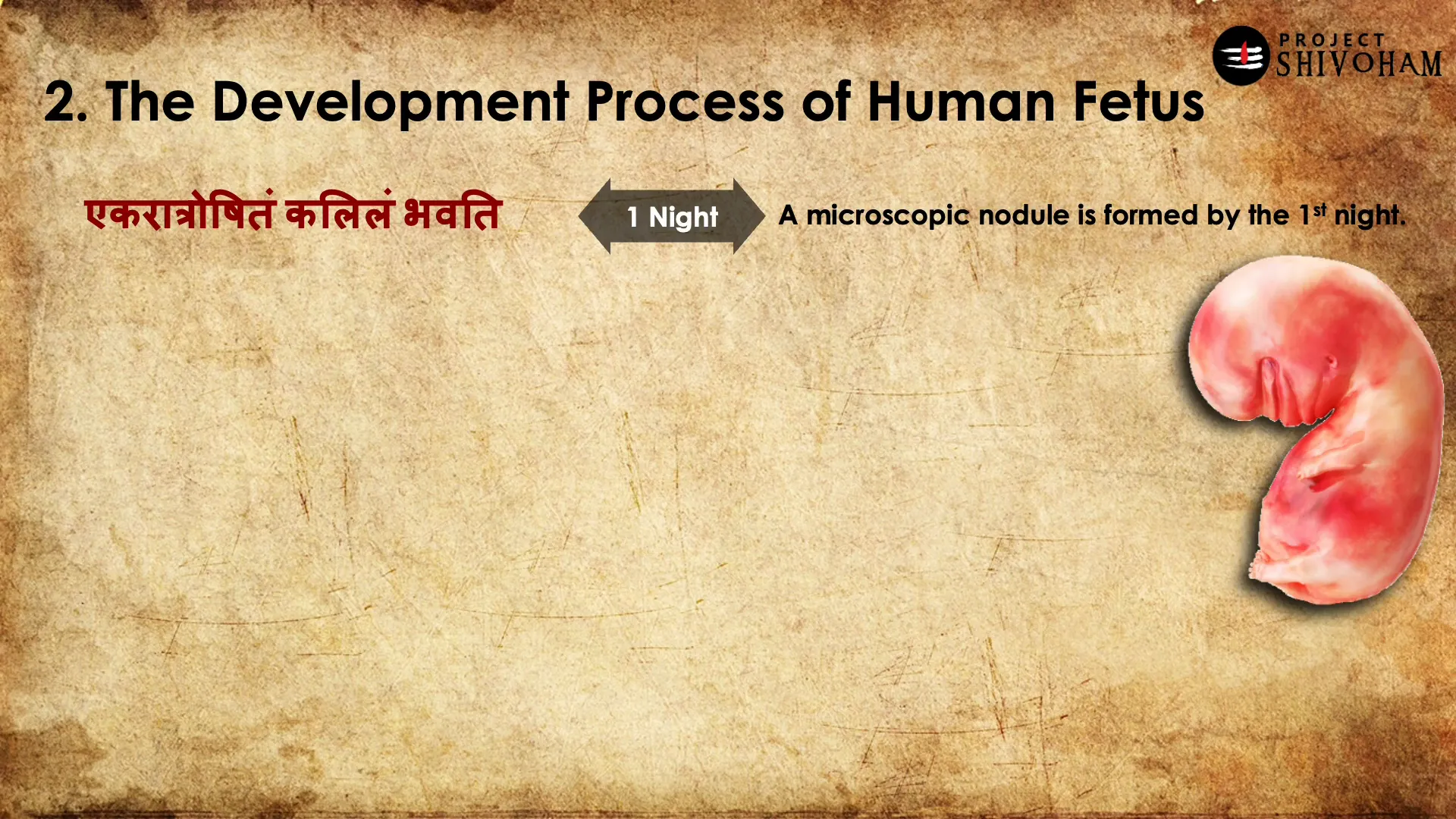
Understanding Conception
The Upanishad describes the conception process in detail, illustrating how it begins with the formation of a microscopic nodule within one night of fertilization. This nodule grows and transforms, reflecting the dynamic nature of life itself.
The scripture further elaborates on the stages of fetal development, noting that the embryo undergoes significant changes throughout the months of gestation. Each milestone marks a crucial point in the formation of the human body, highlighting the intricate design of life.
Development Process of the Human Fetus
The Garbha Upanishad provides a month-by-month account of fetal development, detailing the transformation from a nodule to a fully formed human being. This process is meticulously outlined, showcasing the wisdom of ancient scholars in understanding human biology.
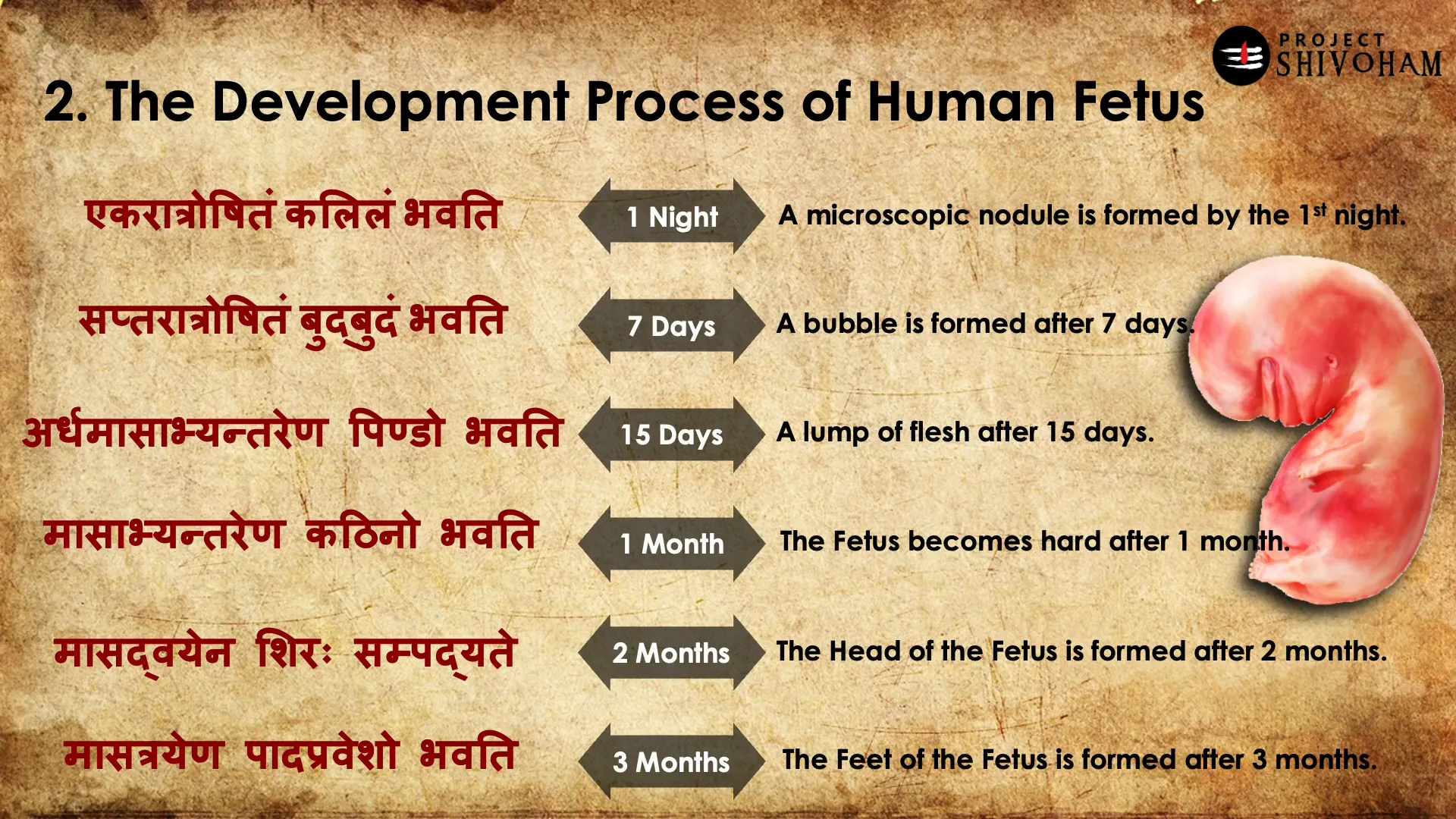
Milestones of Fetal Development
- One Night: Formation of a microscopic nodule.
- Seven Days: Development into a small bubble.
- Fifteen Days: Transformation into a lump of flesh.
- One Month: Hardening of the structure.
- Two Months: Formation of the head.
- Three Months: Development of the feet.
- Four Months: Emergence of fingers, belly, and hips.
- Five Months: Formation of the vertebral column.
- Six Months: Development of mouth, nose, ears, and eyes.
- Seven Months: Union with the jiva (soul).
- Eight Months: Complete development of body parts.
- Nine Months: Full cognitive abilities developed.
These milestones illustrate the profound understanding of fetal development present in the Garbha Upanishad, aligning closely with modern scientific knowledge.
Scientific Validation of Fetal Development
The insights provided in the Garbha Upanishad regarding fetal development resonate with contemporary scientific findings. The scripture’s detailed account of the stages of growth reflects an understanding of biology that was far ahead of its time.
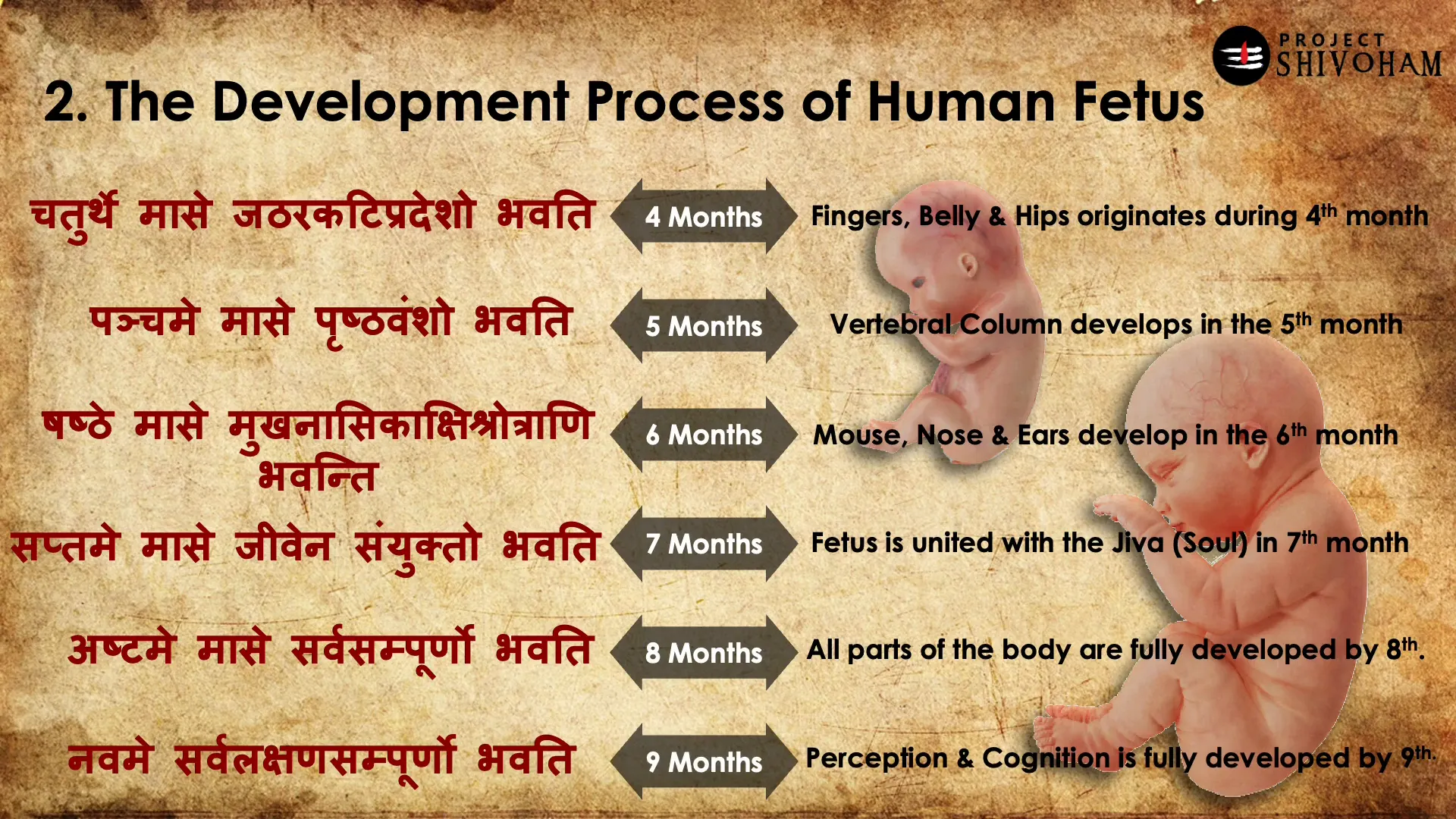
Alignment with Modern Science
While there may be nuances in interpretation, the fundamental principles outlined in the Garbha Upanishad align with modern embryology. The text serves as a testament to the advanced knowledge of ancient scholars, who recognized the complexity of human growth and development.
The union of the jiva with the fetus in the seventh month raises intriguing questions about consciousness and identity, inviting further exploration into the nature of life and existence.
Gender Determination and Conception of Twins
The Garbha Upanishad offers intriguing insights into the factors influencing the gender of a fetus and the conception of twins. According to the scripture, the predominance of the father’s or mother’s reproductive elements determines the gender of the child. If the father’s semen is more dominant, a boy is born; conversely, if the mother’s contribution is stronger, a girl is born. The scripture even mentions a scenario where both contributions are equal, resulting in a genderless baby.
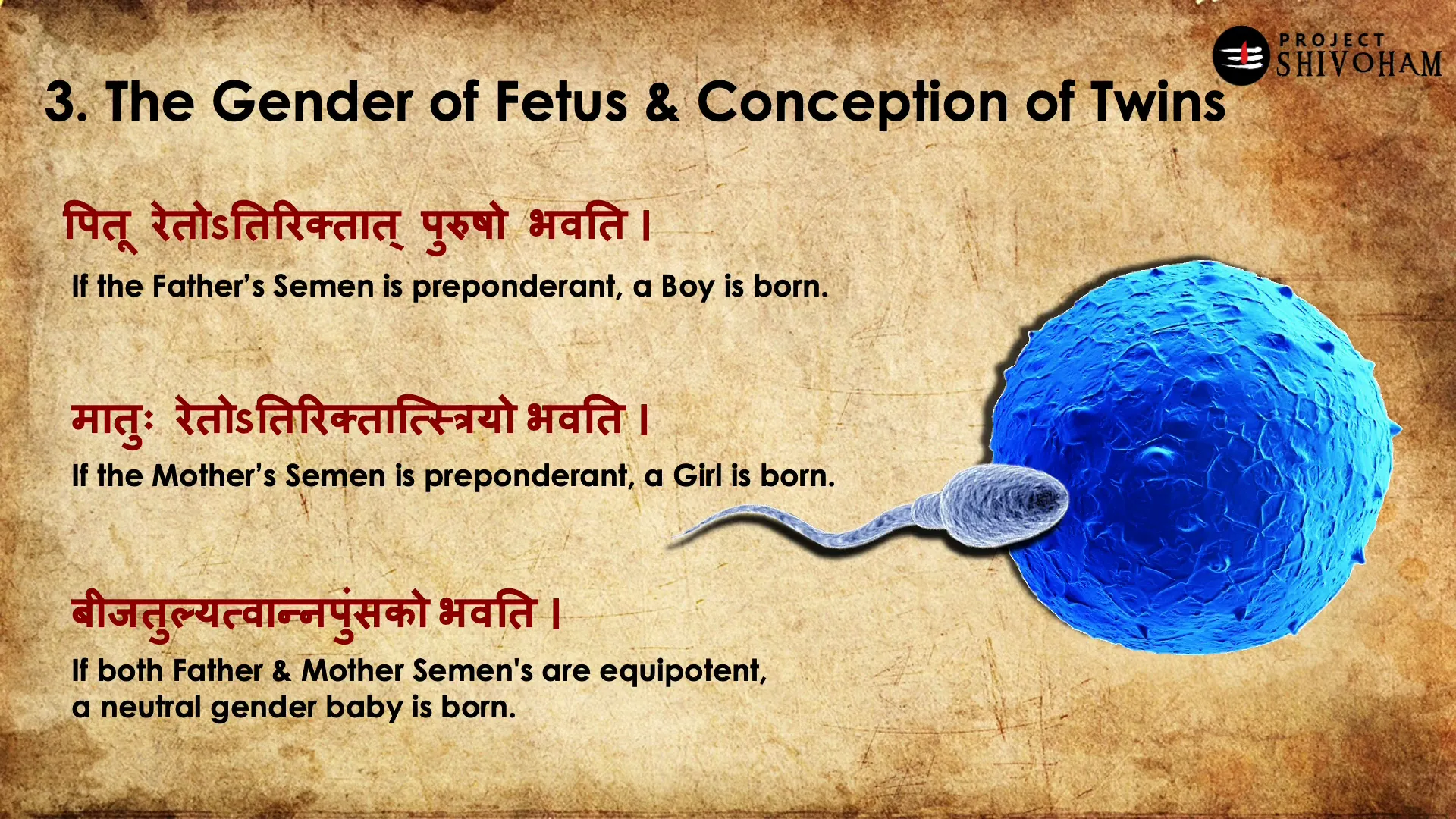

However, modern science clarifies that the gender of a fetus is primarily determined by the chromosomes contributed by the father. The X and Y chromosomes play a critical role in this process, making the claims of Garbha Upanishad scientifically inaccurate. Nonetheless, the mention of a neutral gender in the text reflects a progressive acknowledgment of diverse identities in ancient Indian society.
Conception of Twins
The scripture describes how twins are conceived through a fascinating process. When the fertilized egg, resulting from the union of sperm and ovum, encounters pressure from the vayu element in the mother’s body, it can split into two, leading to the birth of twins. This description aligns with modern scientific understanding of twinning, where environmental factors can influence the division of the fertilized egg.
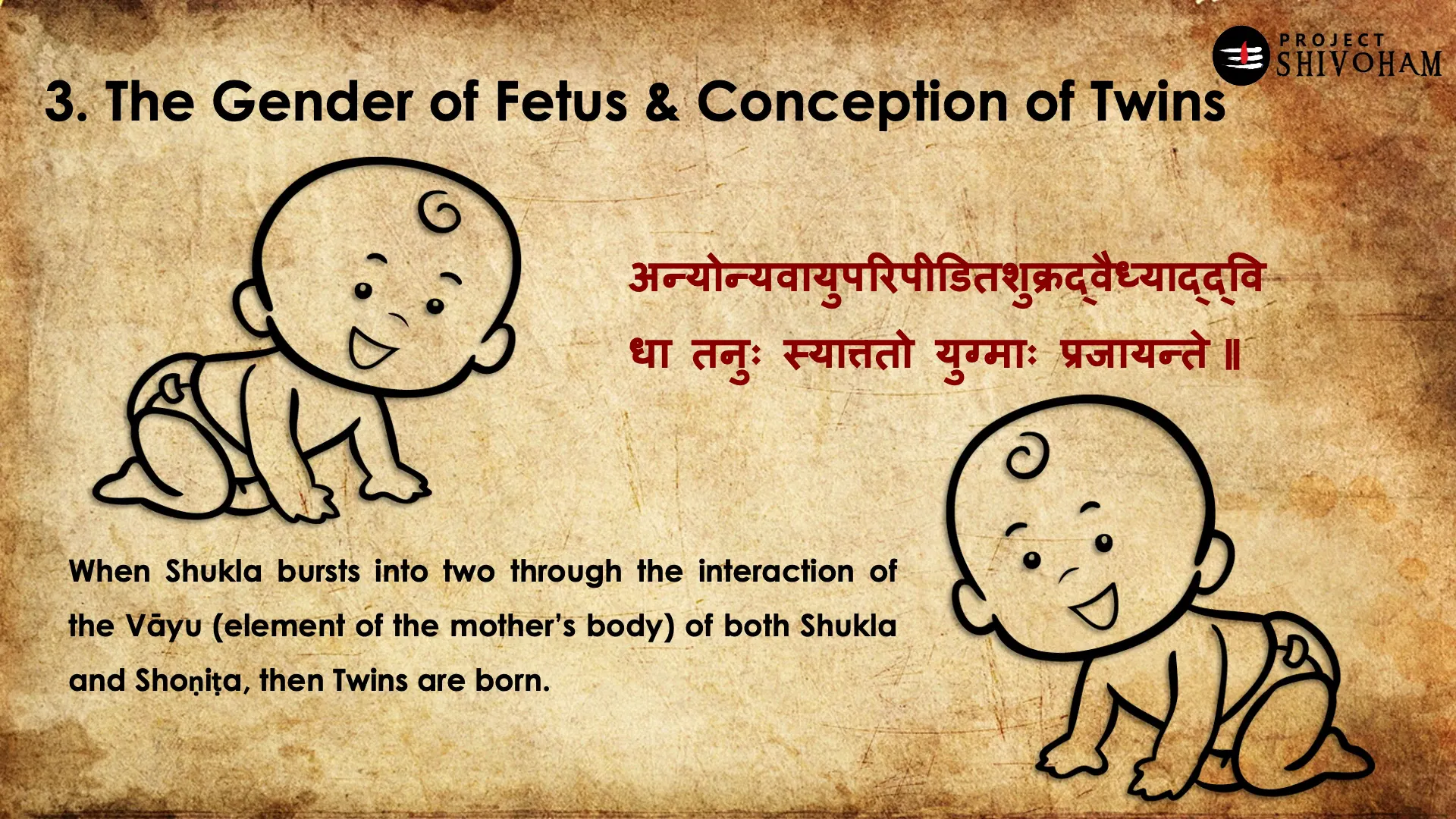
Psychological and Spiritual State of the Fetus
One of the most profound aspects of the Garbha Upanishad is its exploration of the psychological and spiritual state of the fetus. Maharshi Pipalada delves into what the fetus perceives and feels while in the womb. He suggests that the fetus may have thoughts about past lives and its future, indicating a level of consciousness that transcends mere biological existence.
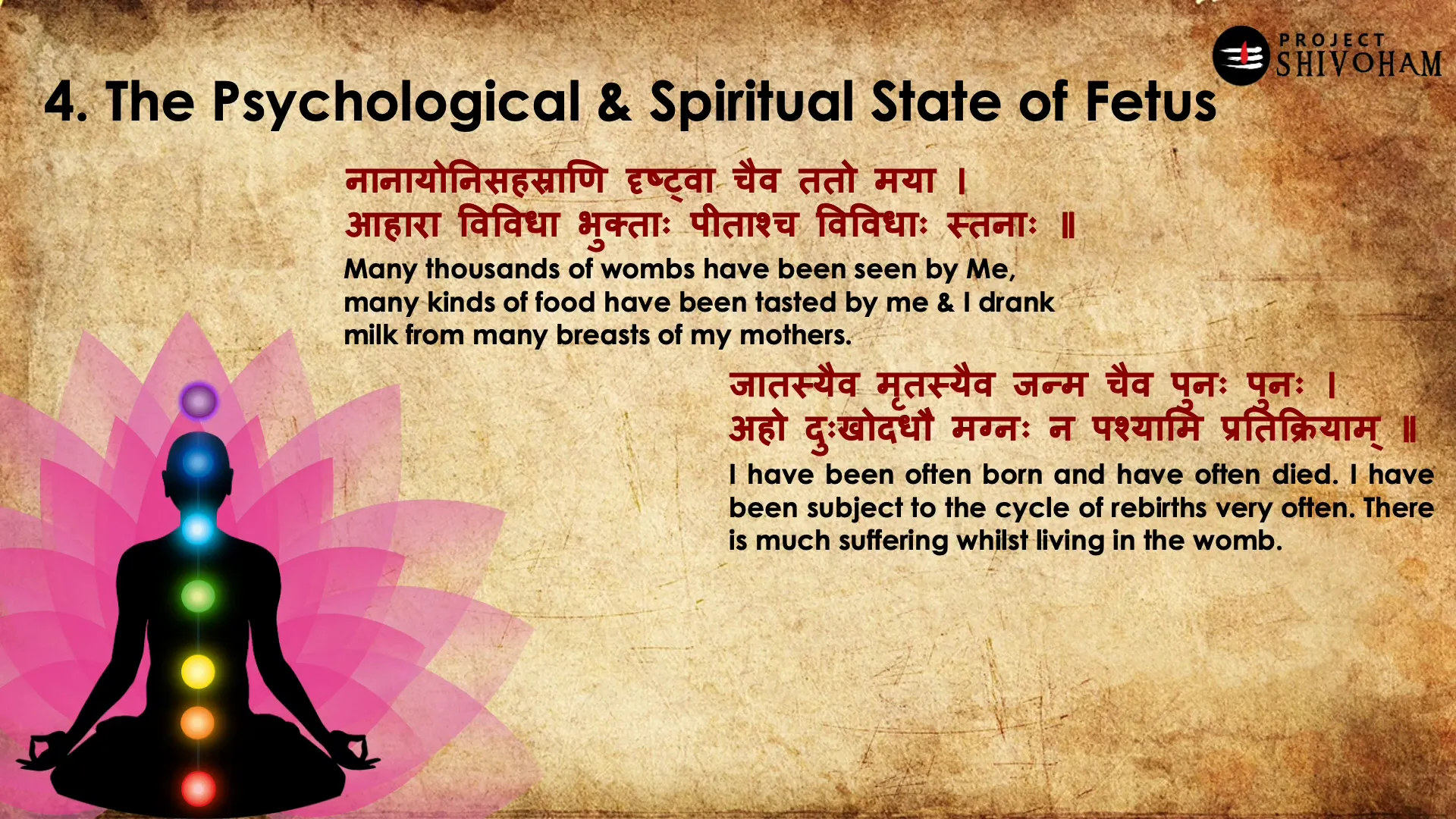
Research in contemporary science supports the notion that fetuses can respond to external stimuli, such as sound. This responsiveness hints at a level of awareness that challenges our understanding of consciousness. The Upanishad posits that the fetus experiences its own journey of self-discovery, echoing the spiritual quest for knowledge and liberation.
Spiritual Significance
While the scientific aspects of the Garbha Upanishad are compelling, the spiritual implications are equally significant. The text invites readers to contemplate the nature of existence and the relationship between the soul (jiva) and the body. It raises questions about the essence of life and the continuity of consciousness beyond physical birth.
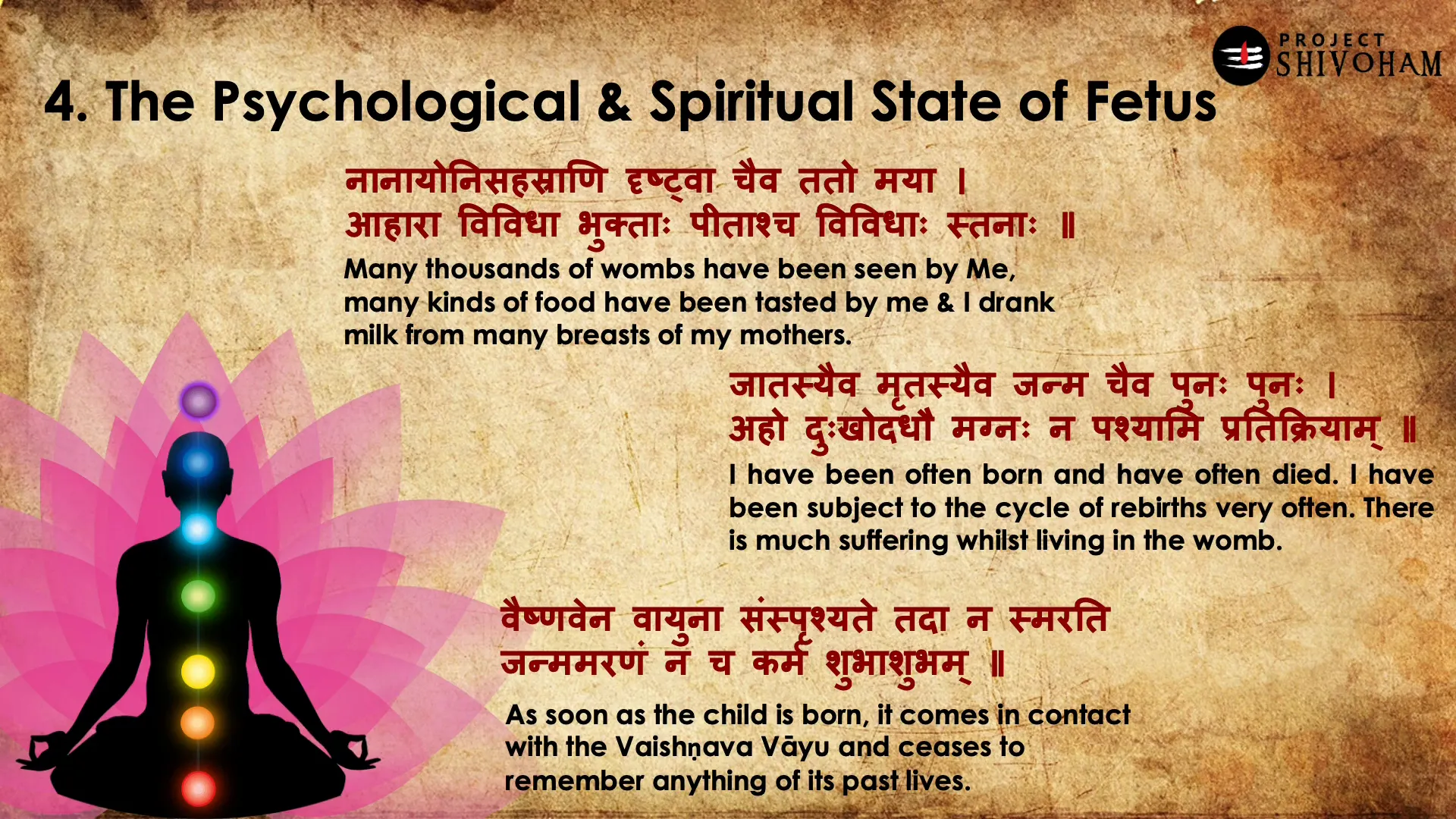
Anatomy of the Newborn Child
The final section of the Garbha Upanishad provides a meticulous account of the anatomy of the newborn child. Maharshi Pipalada details the structural elements of the body, including the number of bones, muscles, and delicate spots present in a newborn. This information showcases the ancient understanding of human anatomy, which aligns closely with modern medical knowledge.
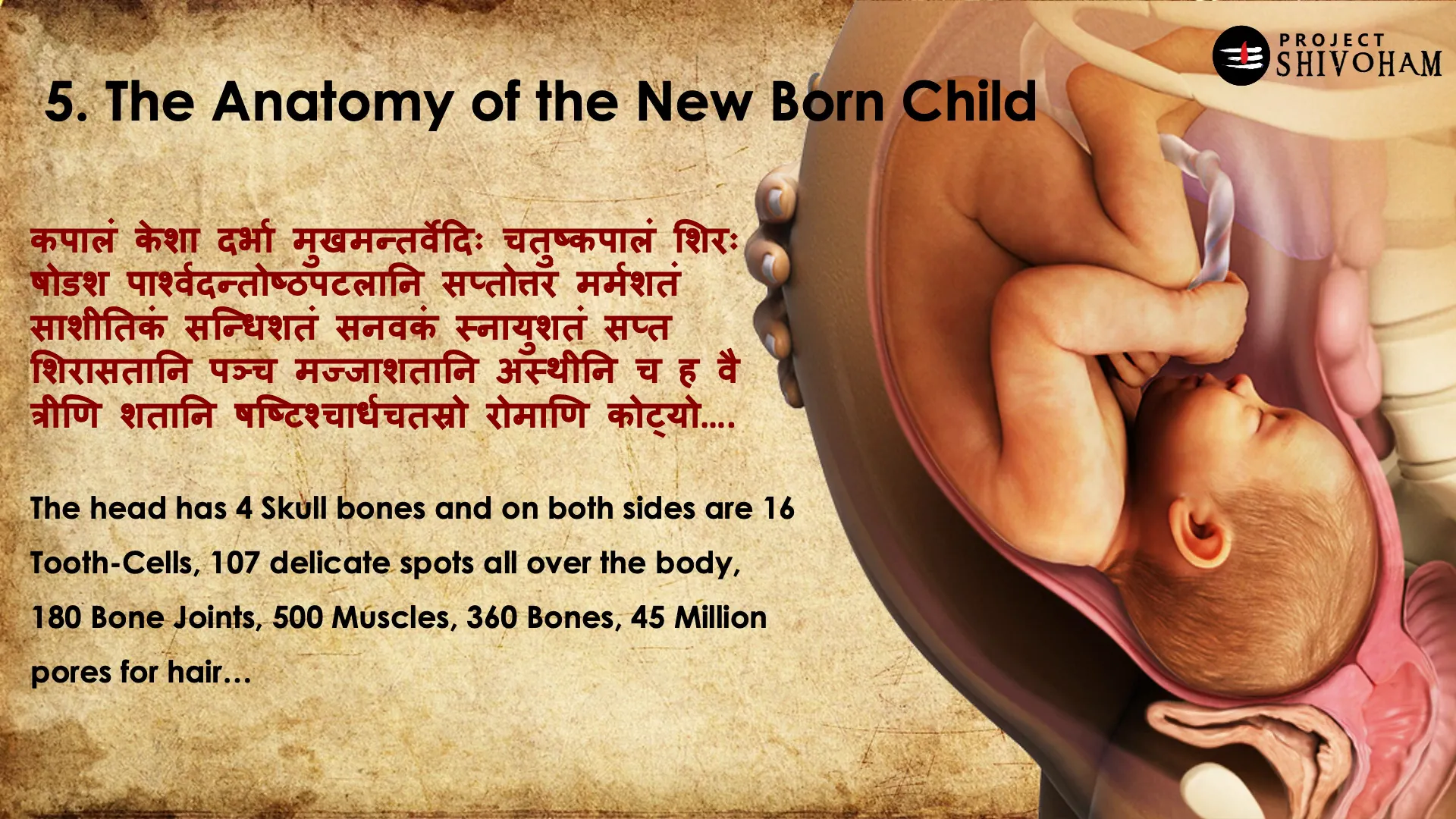
According to the scripture, a newborn has four skull bones, sixteen tooth cells on each side, and a total of 360 bones. The detailed descriptions highlight the complexity of human anatomy and the intricate design of the body from birth. Such insights reinforce the significance of the Garbha Upanishad as a valuable resource in understanding human development.
Conclusion and Call to Action
The Garbha Upanishad serves as an enlightening exploration of human embryology, intertwining scientific and spiritual dimensions of fetal development. Its insights into gender determination, the conception of twins, and the psychological state of the fetus provide a rich tapestry of knowledge that resonates with both ancient wisdom and contemporary science.
As we continue to uncover the depths of the Garbha Upanishad, it becomes increasingly vital to share this knowledge with a broader audience. By educating others about the profound insights contained within this scripture, we can bridge the gap between ancient wisdom and modern understanding.
We encourage readers to delve deeper into the Garbha Upanishad, explore its teachings, and share this valuable knowledge with others. Let us honor the wisdom of our ancestors and integrate their insights into our contemporary lives.
FAQs about Garbha Upanishad
What is the Garbha Upanishad?
The Garbha Upanishad is an ancient Indian scripture that focuses on the embryological development of the human fetus and its spiritual significance.
Who wrote the Garbha Upanishad?
The Garbha Upanishad was authored by Maharshi Pipalada and is part of the Adharma Veda.
What are the key topics covered in the Garbha Upanishad?
The key topics include human anatomy, fetal development, gender determination, conception of twins, and the psychological state of the fetus.
How does the Garbha Upanishad relate to modern science?
Many concepts in the Garbha Upanishad align with modern scientific understanding of embryology and human development, showcasing the advanced knowledge of ancient scholars.
Why is the Garbha Upanishad not commonly known today?
Despite its scientific and philosophical significance, the Garbha Upanishad has not been widely taught or recognized in contemporary education, leading to a lack of awareness about its teachings.